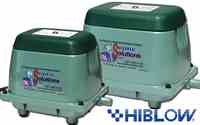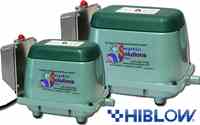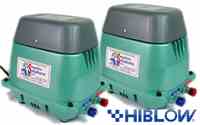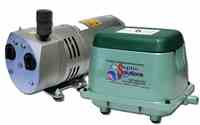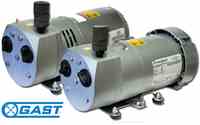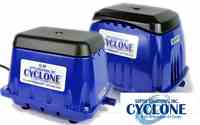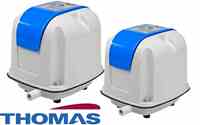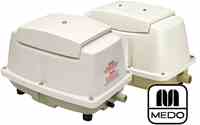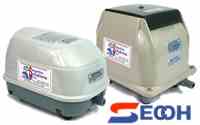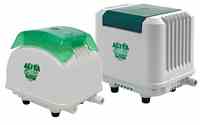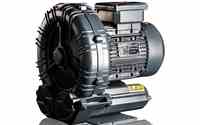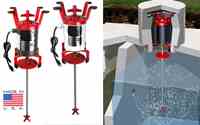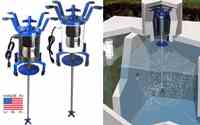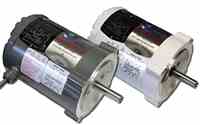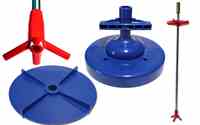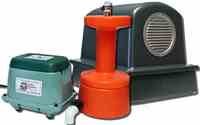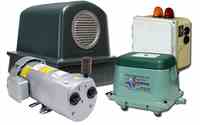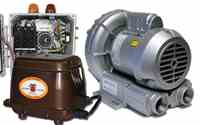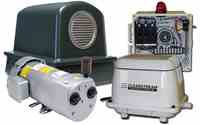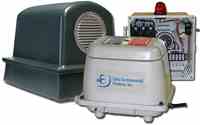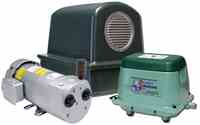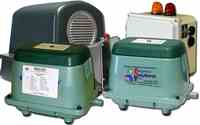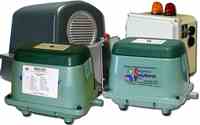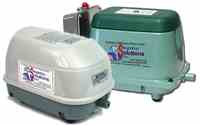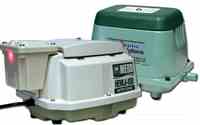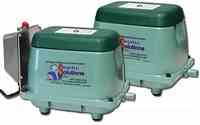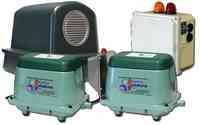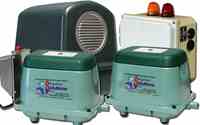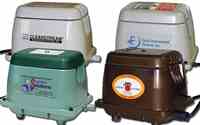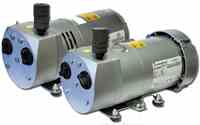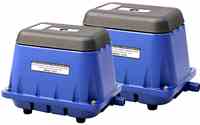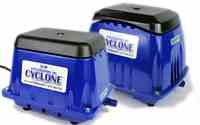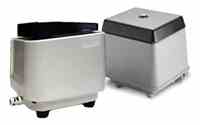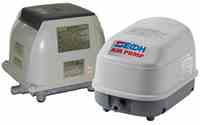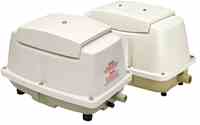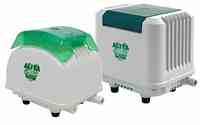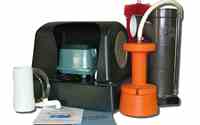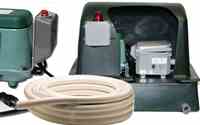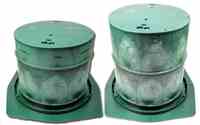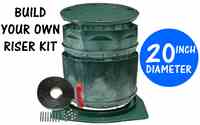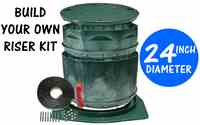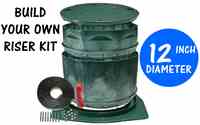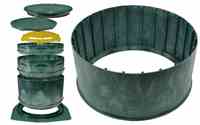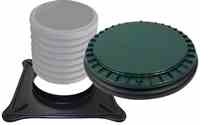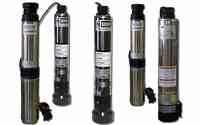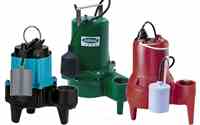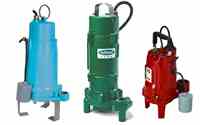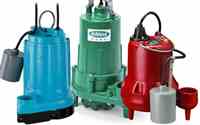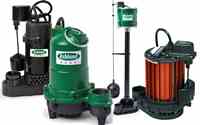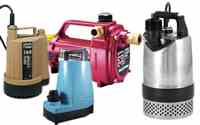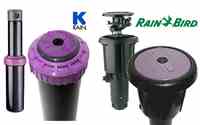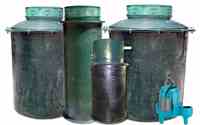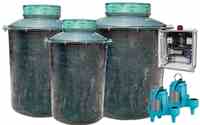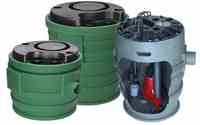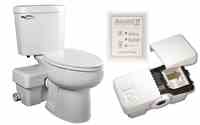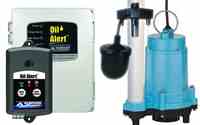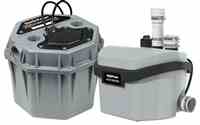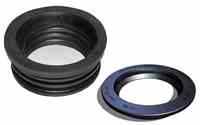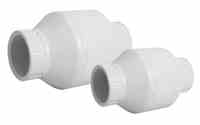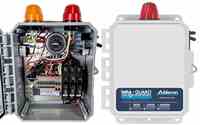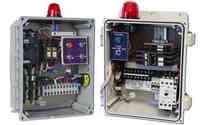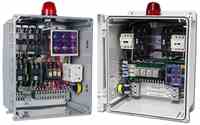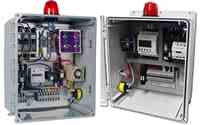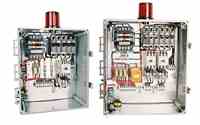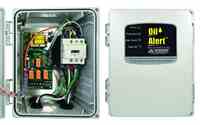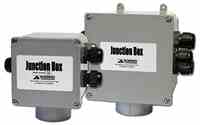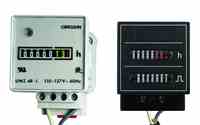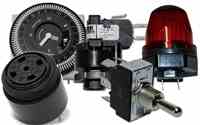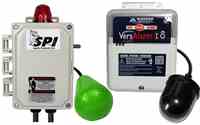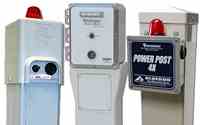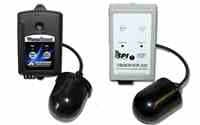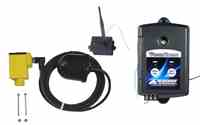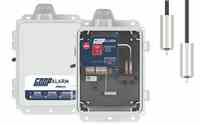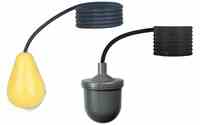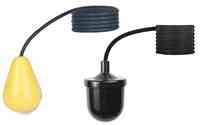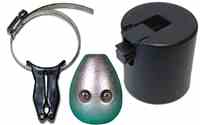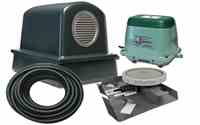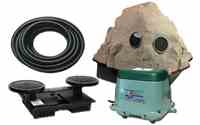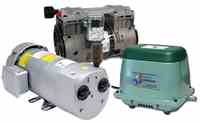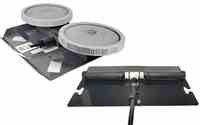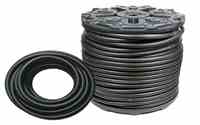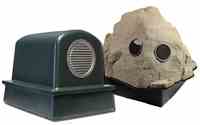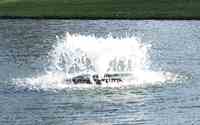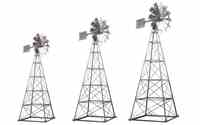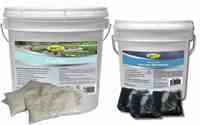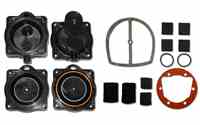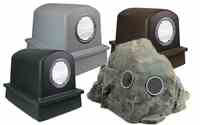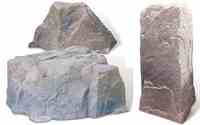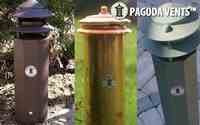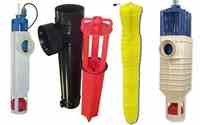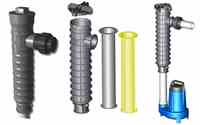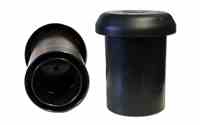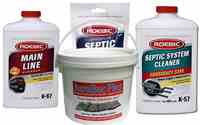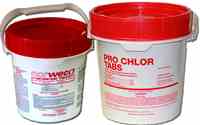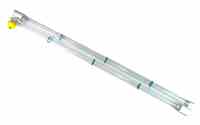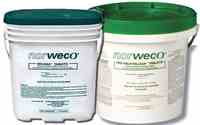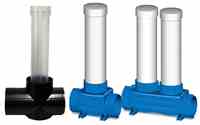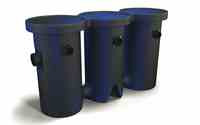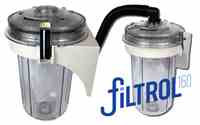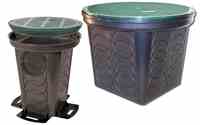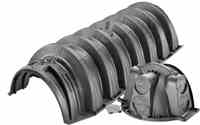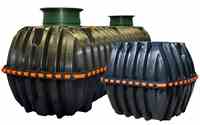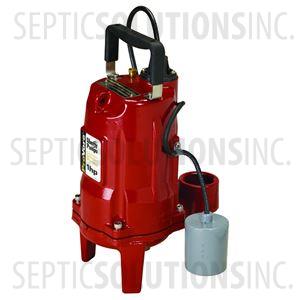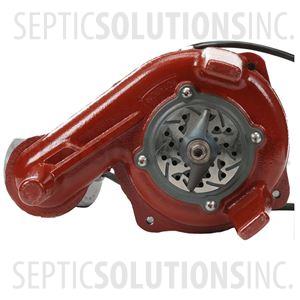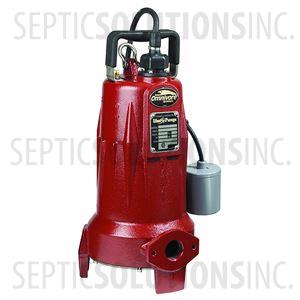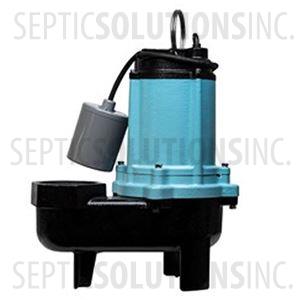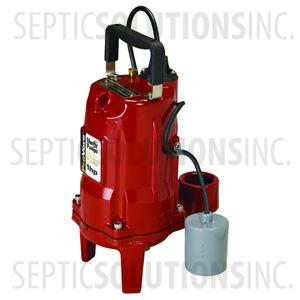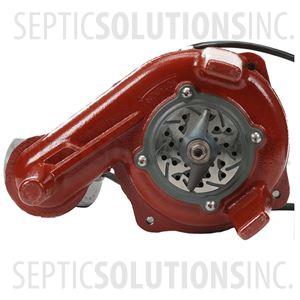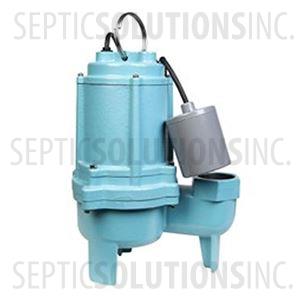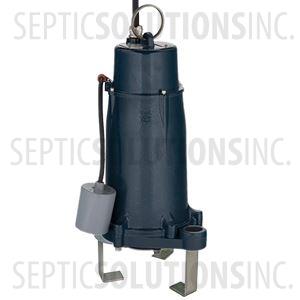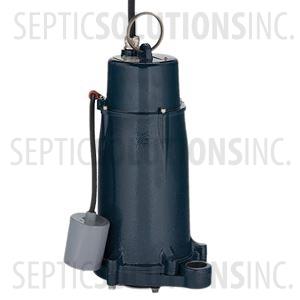Sewage Ejector Pumps -vs- Sewage Grinder Pumps
Updated: July 31, 2025
TYPES OF SEWAGE HANDLING PUMPS
Not all sewage handling pumps are grinder pumps. There are two main categories of solids handling pumps for residential and light commercial applications: Sewage Ejector Pumps and Sewage Grinder Pumps. In this article we will discuss in detail the similarities, differences, and best use cases for each type of submersible sewage pump.
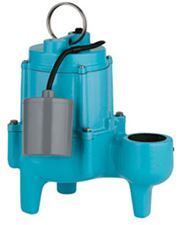 SEWAGE EJECTOR PUMPS
SEWAGE EJECTOR PUMPS
Sewage Ejector Pumps are high volume/low pressure submersible solids handling pumps. Sewage Ejector pumps do not have grinding blades. They use a spinning impeller that intakes the raw sewage through the bottom of the pump and forces it under pressure out of the outlet and into the discharge pipe. Sewage Ejector pumps are generally designed to pass up to 2’’ diameter solids through the pump.
APPLICATIONS
The most common application for a Sewage Ejector pump is to move raw sewage from a residence to a septic tank or gravity flow sewer main. These units normally have a 2’’ discharge and range from 4/10 HP all the way up to 2 HP. Sewage Ejector pumps can pump high volumes of sewage (up to 220 Gallons Per Minute). These pumps are designed for short pumping distances (under 750 feet) and can handle head pressures of nearly 75 feet.
A common example of a sewage ejector pump would be the pump in a basement floor pit designed to evacuate the sewage from a basement bathroom up to the main level. Another example is to use an ejector pump when adding living space or bathroom to an outbuilding, garage, or shed in order to force the waste back to the septic tank for the main house.
When pumping to a septic tank or septic system, a sewage ejector pump must always be used instead of a sewage grinder pump.
SEWAGE GRINDER PUMPS
Sewage Grinder Pumps are considered high pressure/low volume submersible solids handling pumps. Sewage Grinder pumps have cutting blades that grind the raw sewage into a slurry before passing it through the discharge line. Sewage Grinder Pumps are designed to handle the same type of materials as a Sewage Ejector Pump, but have the ability to pass tougher solids.
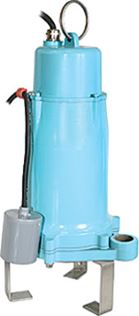 APPLICATIONS
APPLICATIONS
Sewage Grinder Pumps are most commonly used in commercial pumping applications or when pumping from a residence to a pressurized city sewer main. Because a pressurized sewer main is under pressure from another sewage pump, it takes a pump that can overcome that pressure to pump liquids into that main. Sewage Grinder Pumps have the ability to do this, pumping liquid at nearly 60 P.S.I. Sewage Grinder pumps normally have a 1-1/4’’ discharge and range from 2 HP and up. They will pump low volumes of sewage (30 Gallons Per Minute or less), but can push it over longer distances (thousands of feet) and can handle head pressures of up to 130 feet.
SPECIAL NOTE ON GRINDER PUMPS:
It is not recommended to use a Sewage Grinder Pump when pumping sewage from a residence to a septic tank. The sewage gets ground up into such a fine slurry that once it enters the septic tank the solids do not ever separate from the liquid and get passed on to the secondary system. This will quickly ruin your subsurface leaching field.
2.0 HP Sewage Grinder pumps also usually require a minimum of 20 to 30 feet of head pressure in order to operate correctly. Using a Sewage Grinder pump in a low head situation (very little vertical lift, short horizontal run) will quickly burn up the pump. Most manufacturers rely on that minimum amount of head pressure to keep the RPMs of the electric motor down. When that head pressure is not existent, the motors spin faster causing them to pull more amperage and run hotter which will eventually lead them to fail much faster than normal.
WHICH PUMP SHOULD I USE?
You should only use a Sewage Grinder Pump when one the following apply to your application:
- Only when pumping to a city sewer main. Cannot be used to pump into a septic tank.
- When pumping to a pressurized sewer main.
- When pumping a very long distance (750 feet or more)
- You have a high vertical distance to lift the sewage (usually a minimum of 20 to 30 feet)
Below are the scenarios when a Sewage Ejector Pump will work best:
- When pumping sewage to a septic tank.
- When pumping sewage a short distance to a gravity sewer main.
- When pumping sewage short distances (750 feet or less)
- You have a low vertical distance to lift the sewage (under 70 feet)
CONCLUSION
In summary, not all sewage handling pumps are Grinder Pumps and a Sewage Grinder pump is not always necessary to pump raw sewage. In fact, in many cases a Sewage Ejector pump is the much better option. And, there are certain scenarios when you could use either type.
THE EXCEPTIONS TO THE RULES - RESIDENTIAL GRINDERS
In recent years manufacturer's have introduced residential grinder lines that can be used as direct replacements for sewage ejector pumps. These pumps carry a small footprint and are designed to operate in low head pressure applications, just like sewage ejector pumps.
The Liberty ProVore, Little Giant 16G, and Zoeller Shark 800 series pumps are all specialty units designed to be used in place of residential 4/10 to 1.0 HP sewage ejector pumps. There is no minimum head requirement on these units and they include the same cutting action of the larger commercial grinder pumps but with a smaller 1.0 HP motor. While this will work fine pumping from a home to a city sewer, because it still grinds the sewage into a slurry we still would not recommend using it to pump to a septic tank.
If the information discussed in the article above does not make it clear which pump you need to use, please feel free to call us at 1-877-925-5132 and we would be happy to show you exactly which pump would be best for your application.


